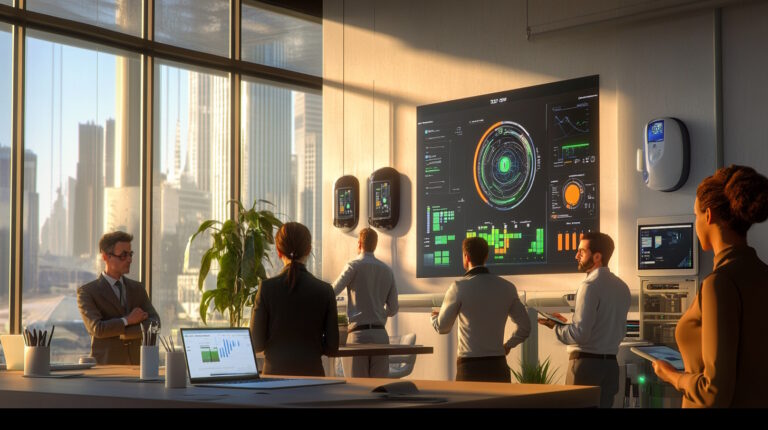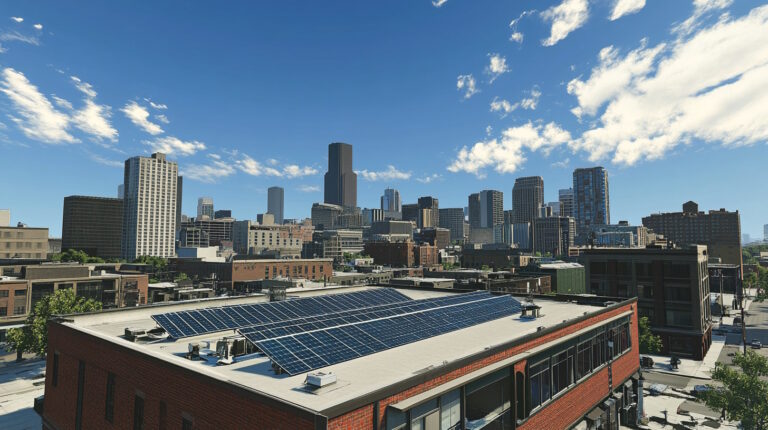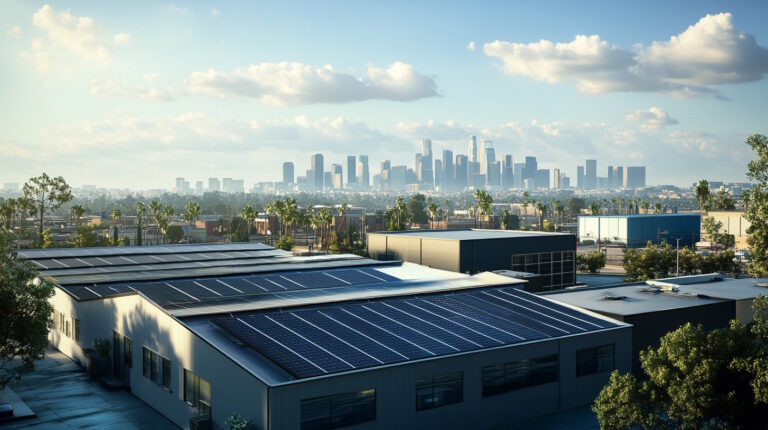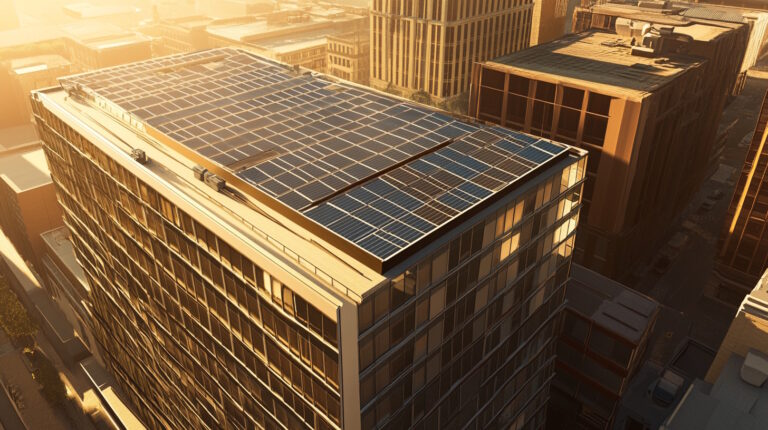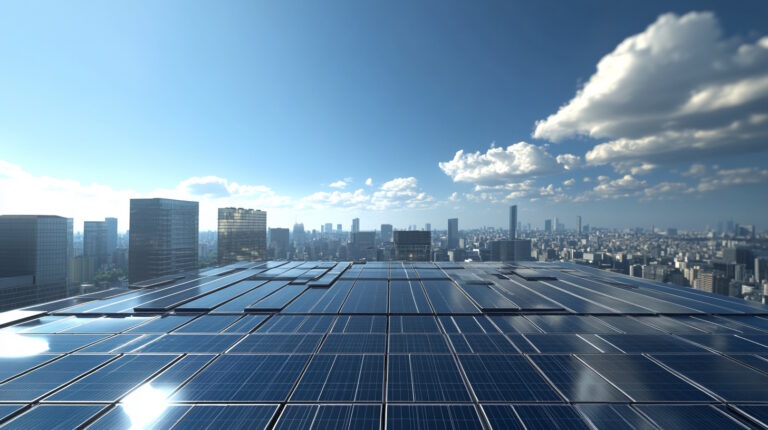Article Insights
- Understand what a Commercial Solar Power Purchase Agreement is and how it works.
- Discover the key benefits of solar PPAs for commercial properties, including cost savings and environmental impact.
- Learn what to consider before signing a Solar PPA to ensure it meets your business’s needs.
- Gain insight into why many businesses prefer Solar PPAs over purchasing a solar system outright.
As energy costs rise and sustainability becomes a business priority, companies are seeking innovative ways to lower their energy expenses and reduce their environmental impact.
For business owners, commercial property owners, and developers, solar energy offers a compelling solution. But adopting solar power doesn’t have to mean a hefty upfront investment.
Enter the Commercial Solar Power Purchase Agreement (PPA)—an accessible, cost-effective way to harness the power of the sun without the burden of owning or maintaining the system.
This article explores everything you need to know about Solar PPAs, from how they work to why they are increasingly popular among businesses like yours.
What is a Solar PPA?
A Commercial Solar Power Purchase Agreement is a financial arrangement that allows businesses to adopt solar energy without purchasing a solar system.
Instead, a third-party company—usually a solar developer—installs, owns, and maintains the solar panels on your property. In return, your business agrees to purchase the electricity generated by the system at a predetermined rate, typically lower than utility prices.
This agreement offers an alternative to traditional energy sources, enabling businesses to reduce costs and achieve sustainability goals with minimal upfront investment.
With a Solar PPA, you don’t need to worry about the costs of installation, repairs, or upgrades; the third-party provider handles it all.
How Solar PPAs Work
The process of entering a Solar PPA typically involves the following steps:
- Site Evaluation and Agreement: The solar provider assesses your property’s solar potential and presents a PPA proposal outlining rates, terms, and expected energy savings.
- Installation and Ownership: The provider installs the solar system, which remains their property throughout the agreement.
- Energy Generation and Purchase: Your business purchases the electricity generated by the system at a fixed rate, usually for 15-25 years.
- End-of-Term Options: Once the PPA ends, you may have the option to renew the agreement, purchase the system, or have it removed.
Visual suggestion: A flowchart illustrating the four main stages of a Solar PPA, from site evaluation to end-of-term options.
Key Benefits of Solar PPAs for Commercial Properties
One of the most significant advantages of a Solar PPA is its ability to eliminate the financial barriers to going solar. Businesses don’t have to pay upfront costs for solar system installation, allowing them to allocate capital elsewhere.
Instead, they lock in predictable energy costs over the agreement’s term, often saving money compared to traditional energy expenses.
Moreover, solar energy aligns with growing corporate sustainability initiatives. By adopting a Commercial Solar Power Purchase Agreement, businesses can significantly reduce their carbon footprint while meeting customer and stakeholder expectations for environmental responsibility.
Another benefit is the hands-off nature of a PPA. Since the solar provider owns and maintains the system, your business avoids operational and maintenance headaches.
This is particularly appealing for property owners managing multiple sites or developers overseeing large-scale projects.
Visual suggestion: A cost comparison graphic showing projected energy savings for a Solar PPA versus traditional utility costs over 20 years.
Considerations Before Signing a Solar PPA
While a Solar PPA offers many advantages, it’s important to carefully evaluate the agreement terms to ensure they align with your business needs. Key factors to consider include:
- Projected Savings: Analyze the energy rate offered in the PPA versus your current utility rates. Ensure that the long-term savings justify the agreement.
- Contract Length: Solar PPAs typically last 15-25 years. Consider how this aligns with your property ownership plans and energy needs.
- Flexibility and Penalties: Review clauses related to early termination, property sale, or renegotiation.
Engaging with an experienced consultant or legal advisor can help you navigate these details and make an informed decision.
Why Choose a Solar PPA Over Purchasing a Solar System?
For businesses weighing the choice between a Solar PPA and purchasing a solar system outright, it often comes down to financial priorities and operational preferences.
A Solar PPA eliminates the need for upfront capital, making it an attractive option for companies looking to improve cash flow.
Additionally, PPAs transfer system ownership and maintenance responsibilities to the provider, freeing your business to focus on its core operations.
By contrast, purchasing a system may involve higher upfront costs but could offer more significant long-term savings, particularly if you can take advantage of tax credits and incentives.
For businesses that are scaling or anticipate changing energy needs, Solar PPAs provide flexibility. As the solar provider retains ownership, the system can be adjusted or relocated more easily than a purchased system.
Commercial Solar PPA
A Commercial Solar Power Purchase Agreement represents a practical, affordable solution for businesses looking to adopt solar energy.
With no upfront costs, predictable energy rates, and sustainability benefits, Solar PPAs are transforming how commercial properties power their operations.
If you’re a business owner, commercial property owner, or developer, now is the time to evaluate your property’s solar potential. A Solar PPA could be the key to cutting costs, meeting sustainability goals, and positioning your business as a leader in renewable energy adoption.
Reach out to Green Current Advisors to explore your options and take the first step toward a brighter, greener future.


